Direct and Indirect of Present Continuous Tense
English is a flexible language that helps us talk about things happening now or near now. We call one of the ways to do this the “present continuous tense.” It helps us explain actions as they are happening. In this article, we’ll learn how to use this tense when someone is talking directly or telling us what someone else said. We’ll make it simple with clear examples to understand better.
Understanding the Present Continuous Tense:
Before we go to learn direct and indirect speech, let’s quickly go over how we make and use the present continuous tense. We usually create the present continuous tense by using the word “is,” “am,” or “are” with “ing” at the end of a verb.
Important Note: You can Download FREE PDF at the bottom
Positive statement: Subject + am/is/are + verb + -ing
Example: He is studying for his exams.
Negative statement: Subject + am/is/are + not + verb + -ing
Example: They are not watching TV right now.
Interrogative statement: Am/Is/Are + subject + verb + -ing?
Example: Are they coming to the party tonight?
Present Continuous Tense in Direct Speech:
Direct speech means we repeat exactly what someone said. When we tell others what someone is saying right now using the present continuous tense, we can put quotation marks around those words. Here are some examples:
Original Statement: Uzair said, “I am reading a great book.”
Direct Speech: Uzair said, “I am reading a great book.”
Original Statement: “We are going to the market,” they announced.
Direct Speech: “We are going to the market,” they announced.
Change the pronoun in the reporting verb: When changing the pronouns in sentences with the present continuous tense from direct speech to reported speech:
Direct Speech: “I am working on a project,” she said.
Reported Speech: She mentioned that she was working on a project.
To make a sentence from someone talking into a present continuous one, you change the words to fit what’s happening now or when you want to talk about. Here are some examples of how you can do that:
Change time expression:
Original Direct Speech: “I am studying for the exam.”
- Present Time: “He says, ‘I am studying for the exam right now.”
- Past Time: “He said, ‘I was studying for the exam yesterday.”
- Future Time: “He will say, ‘I am studying for the exam tomorrow.'”
Present Continuous Tense in Indirect Speech:
Indirect speech, which is also called reported speech, helps us share what someone said without repeating their words exactly.
Here are the rules for changing what someone said in the present continuous tense from direct speech to indirect speech:
Change the Verb Tense: In indirect speech, we usually talk about what someone said in a slightly different way. The words like “am,” “is,” or “are” change to “was” or “were,” but the action word with “ing” stays the same.
Direct Speech: He said, “I am studying for my exams.”
Indirect Speech: He said that she was studying for her exams.
Important Note: You can Download FREE PDF at the bottom
Direct and Indirect of Present Continuous Tense Examples
Important Note: You can Download FREE PDF at the bottom
| Direct Speech | Indirect Speech |
| “We are going to Changa Manga for a picnic.” they said | They said that they were going to Changa Manga for a picnic. |
| The boy said, “I am preparing well for the examination.” | The boy mentioned that he was preparing well for the examination. |
| “I am making the map of Pakistan,” he said. | He said that he was making the map of Pakistan. |
| The milkman said, “I am milking.” | The milkman mentioned that he was milking. |
| The fishermen said, “We are catching fish.” | The fishermen reported that they were catching fish. |
| Amjad said, “I am winding the watch.” | Amjad stated that he was winding the watch. |
| “We are printing a new book,” they said. | They mentioned that they were printing a new book. |
| “This cloth is selling cheap,” he said. | He mentioned that the cloth was selling cheap. |
| “He is turning the tap on,” she said. | She reported that he was turning the tap on. |
| “I am looking for my watch,” she said. | She said that she was looking for her watch. |
| “He said, ‘I am eating a meal.'” | He said that he was eating a meal. |
| He said, “I am driving the car.” | He said that he was driving the car. |
| “We are taking a shower,” they said. | They said that they were taking a shower. |
| “I am helping him,” | He said that he was helping him. |
| “The baby said, ‘I am crying because I am hungry.'” | The baby said that he was crying because he was hungry. |
| “I am traveling to Lahore,” he said. | He said that he was traveling to Lahore. |
| “They said, ‘We are talking on the phone.'” | They said that they were talking on the phone. |
| “I am winning,” | He said that he was winning. |
| “She is shouting,” he said. | He said that she was shouting. |
| “We are running,” they said. | They said that they were running. |
| “I am remembering the words,” | He/She said that they were remembering the words. |
| “I am sneezing due to fever,” he said. | He said that he was sneezing due to a fever. |
| “The boss said, ‘I am writing the letter,'” | The boss said that he was writing the letter. |
| “All the laborers said, ‘We are sleeping,’’ | All the laborers said that they were sleeping. |
You may also like to read:
Direct and Indirect Narration with Rules and Examples

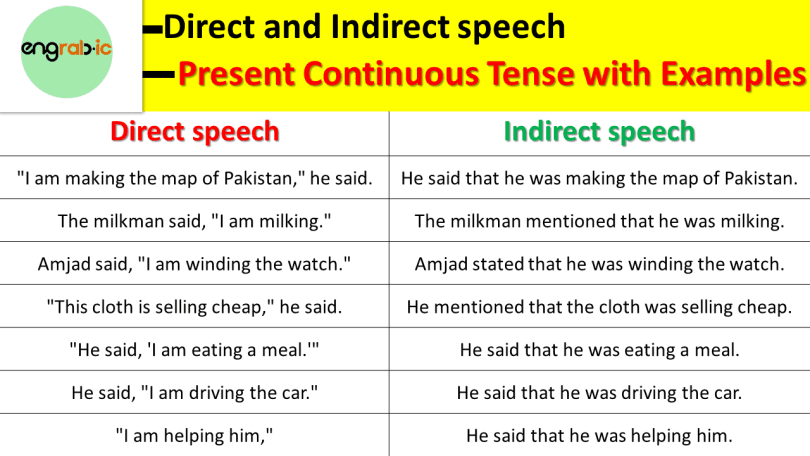
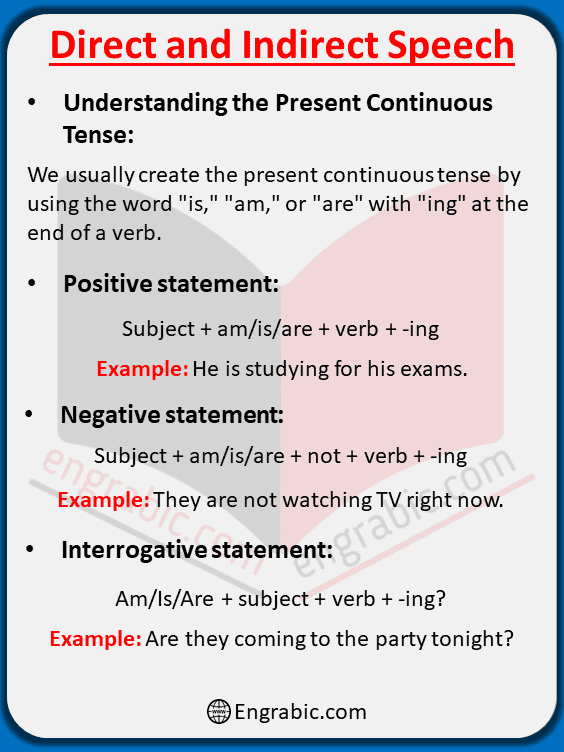
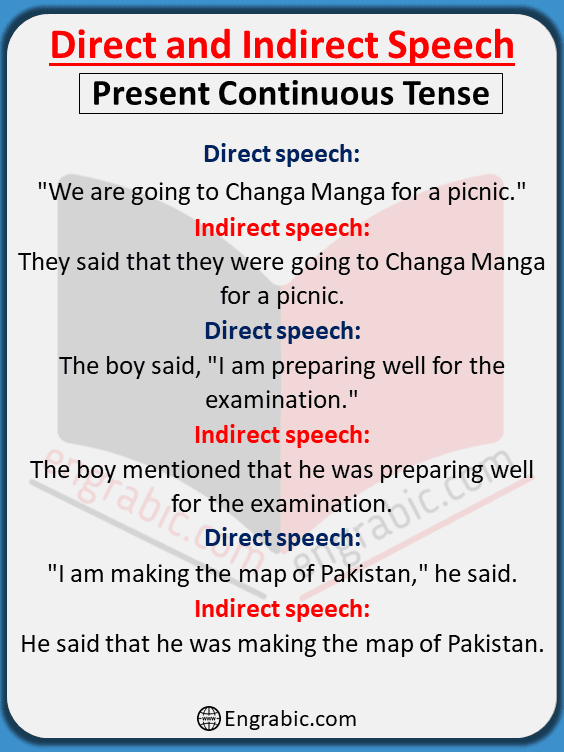

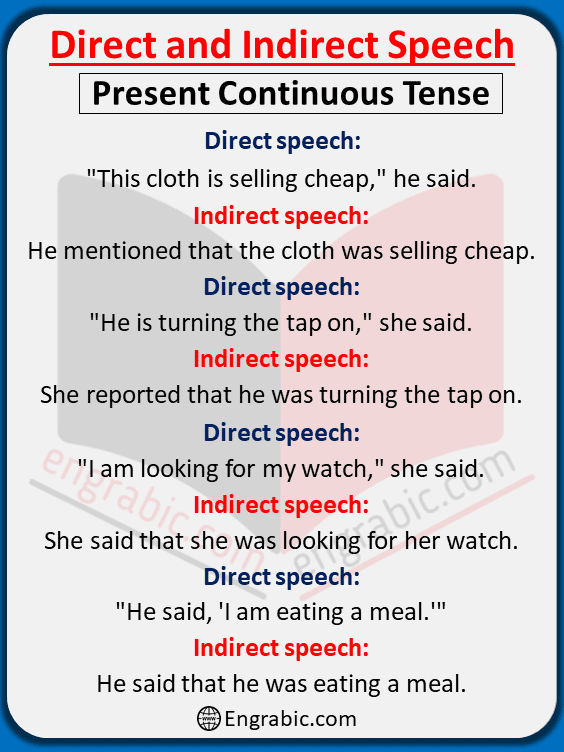

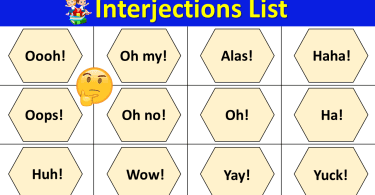
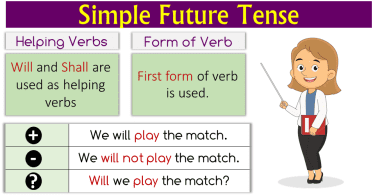
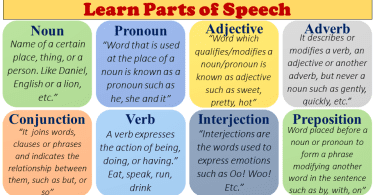
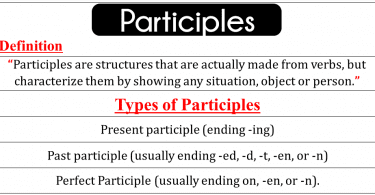
Leave a Comment